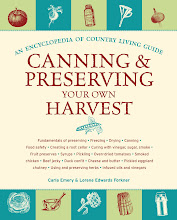Cloche: A cloche (pronounced "klosh") is a
lightweight covering for a plant or plants that can easily be moved. A cloche
is the simplest cover to build and use. It can easily be moved to different
parts of the garden to cover different plants. When the cloche is put on over
tender young plants in early spring, it's called a "hot cap." Unlike
cold frames, cloches allow light to reach a plant from every direction.
You can reuse cloches to cover as many as 3, 4, or more crops
in the same year. Cloches are especially well suited for use in the maritime Northwest,
where plants need protection from excessive rain and cold winds more than from very
low temperatures. The weaknesses of cloches are their vulnerability to heavy
wind and their inability to keep plants as warm as cold frames or greenhouses.
Cloche Materials. A cloche can be made of anything that transmits
light, so the possibilities for design are nearly limitless. They can be made
of cheap materials - cheaper than those needed to make a cold frame or
greenhouse.
To cover a row of plants or a section of garden, you can build
one large cloche or a series of modular cloches that link together. The word
"cloche" is French for bell. In Europe, gardeners have covered plots
for centuries, and in the 1600s, French market gardeners used a glass jar in
the shape of a bell to cover a plant. Now cloches for individual plants may be
made of waxed paper, plastic, fiberglass, or glass. Or your cloche may be a
big, plastic-covered tunnel or tent that covers entire rows of plants. A wide
variety of cloches are available commercially, with an equally wide range in
prices. When open-air gardening begins in the summer, wash your cover material,
dry, and store in a shady place until needed in the fall.
Homemade Cloche Design. You can scrape together a cloche
by making half-circle hoop rows out of old coat hangers and then covering them
with plastic. Or cut out the top, bottom, or side of any 1-gal. plastic or
glass jug. To cover a wide raised bed, use sections of hog-wire fencing curved
to fit the beds and covered with plastic.
- Tunnel: In general, the tunnel style is made by stretching 4-mil polyethylene plastic sheeting over a line of half-circle hoops. The hoops are bent and fastened to strips at the top and bottom sides so they will stay put. For example, you could put the plastic over 6 x 6-inch mesh concrete-reinforcing wire. The reinforcing-wire cloche looks like the tunnel style except the wire is arched from where it is nailed to a 10-foot lumber plank over to the other side, where it is nailed to a parallel plank. Then the plastic is put over that. The 2 end openings are covered with more plastic.To ventilate a tunnel cloche, on cloudy days you open the end away from the wind. On sunny days you can open both ends. A breeze is created by the warm air leaving the cloche. As the weather gets warmer, you'll be able to leave one end open continuously. When the weather gets hot, of course, you take off the plastic and put it away until fall, when the weather gets cold again.
- Tent: This cloche is lighter, portable, and easier to build than the tunnel. It has 4- or 6-mil polyethylene plastic sheeting stretched over an umbrella-tent-style support.
Using a Cloche. Cloches can be placed over any area of your
garden, large or small, that you want to protect. To water, weed, and harvest,
you lift the cloche off the bed, tilt up one end, or take off the plastic. If
your cloche has no natural opening, you must remember to ventilate by propping
up one side.








No comments:
Post a Comment